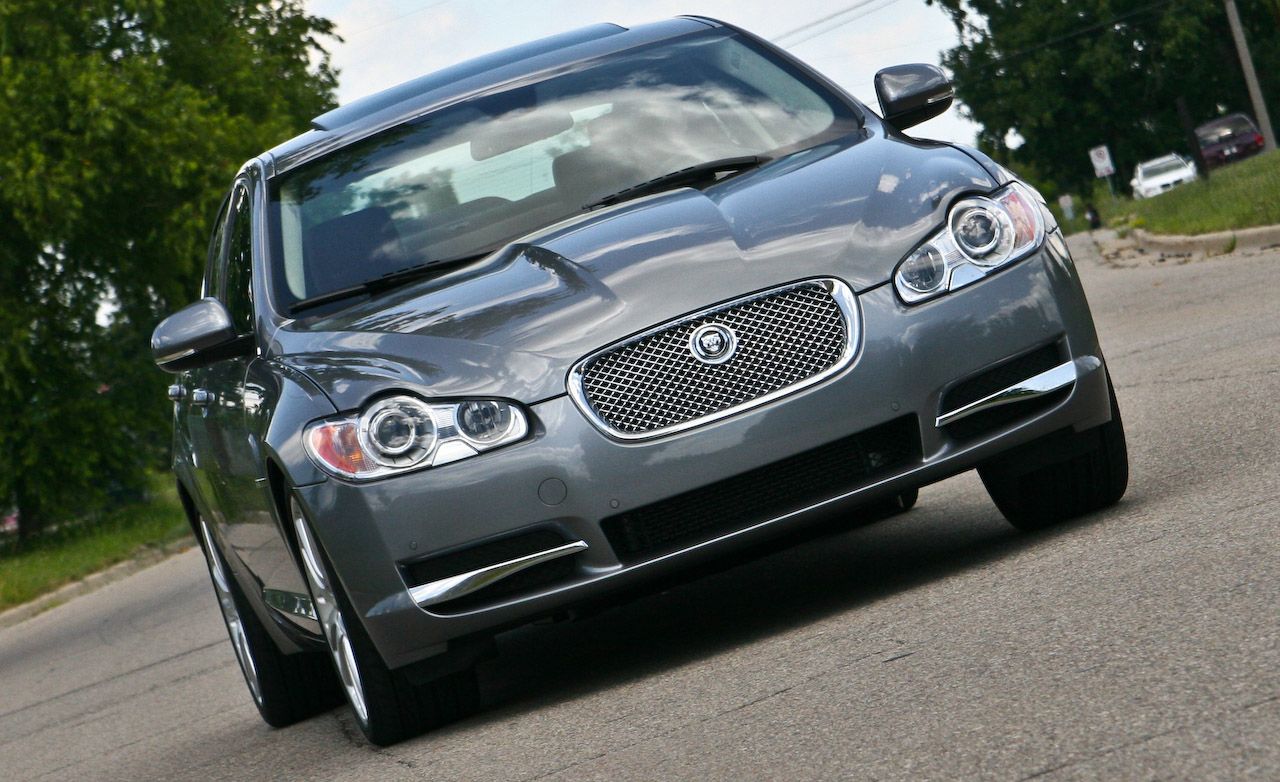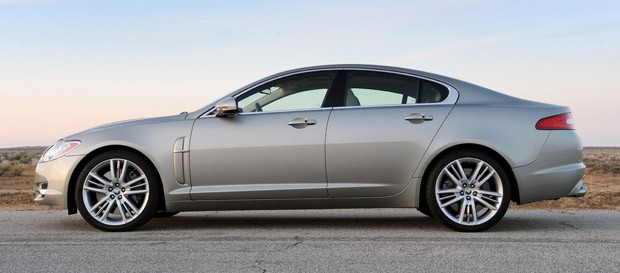

That means you can use the XFR as a daily driver without it punishing you on the morning and evening commute. The performance-oriented XFR’s ride-quality tradeoff is surprisingly minimal compared with an XF Premium, which is powered by a non-supercharged 5.0-liter V-8 and has a relatively firm ride to begin with. It takes only light brake-pedal pressure to get strong stopping power, but the pedal’s progression isn’t the most linear, and the brakes can be a bit grabby. Sport mode holds gears longer before upshifting, keeping engine rpm higher and making the car feel more responsive, as well as providing some engine braking when you take your foot off the gas pedal. The automatic includes paddle shifters on the steering wheel, as well as a Sport mode that’s selected from the console gear selector. The transmission makes smooth shifts during leisurely driving and willingly kicks down when you want to accelerate.

It has a big job to do, and it does it well. The V-8 is force-fed air through a Roots-type supercharger that’s also used in the high-performance Chevrolet Corvette ZR1, and it’s just as at home in the XFR.Ĭhanneling the supercharged V-8’s power is a six-speed automatic transmission. Everything about it says luxury-oriented V-8 … everything but its extra 200 hp, that is.Įven though the V-8 is supercharged, even gearhead passengers will be hard-pressed to know that from the sound, as it makes only the slightest supercharger whine now and then. It’s not an unruly engine - whether you’re talking about its idle smoothness or the sound it makes - and it doesn’t get too loud when accelerating the quad tailpipes emit a deep, pleasing rumble. The way this V-8 makes its power is as impressive as how it moves the XFR. EPA-estimated gas mileage is 15/21 mpg city/highway, which means the XFR avoids a gas-guzzler tax. Jaguar cites a zero-to-60-mph time of 4.7 seconds, which is pretty good for a car that weighs 4,306 pounds. Mash the gas pedal, and the surge of power will snap your head back. No daily driver needs that kind of capability, but that’s the power this V-8 delivers. The XFR’s supercharged V-8, however, is the kind of engine that can take you from 70 to 90 mph in a few seconds. There are all kinds of driving situations, like pulling into traffic or merging onto the highway, that are made easier by having a powerful engine. If you prefer something more eye-catching, brighter colors are available. Our test car’s dark silver paint also helped the XFR blend into the crowd. Subtle cues include hood vents, a revised front bumper with gaping lower grilles, and standard 20-inch alloy wheels. The fact that it’s a sedan helps in this regard, but Jaguar also restrained itself in terms of cosmetic modifications when crafting this R car. With so much power on tap, Jaguar wisely made the XFR something of a “sleeper” - a car with plenty of go-fast potential, but styling that doesn’t draw too much attention.

It’s still a quick car, thanks to its 385-hp V-8 engine. If 510 hp isn’t your thing, check out our review of the 2010 XF Premium. Indeed, it’s a special blend of comfort and power. Boasting a 510-horsepower, supercharged 5.0-liter V-8, the XFR demands prudent use of the gas pedal, lest you find yourself at speeds that will have you trading the XFR’s leather bucket seats for the vinyl backseat of a Crown Victoria.ĭespite its performance aspirations, the XFR’s surprisingly livable suspension tuning means it’s just as suited to commuting in traffic as it is blasting down an open highway. Few cars strike me as too powerful, but the new Jaguar XFR sport sedan comes awfully close, at least when it comes to driving on public roads.


 0 kommentar(er)
0 kommentar(er)
